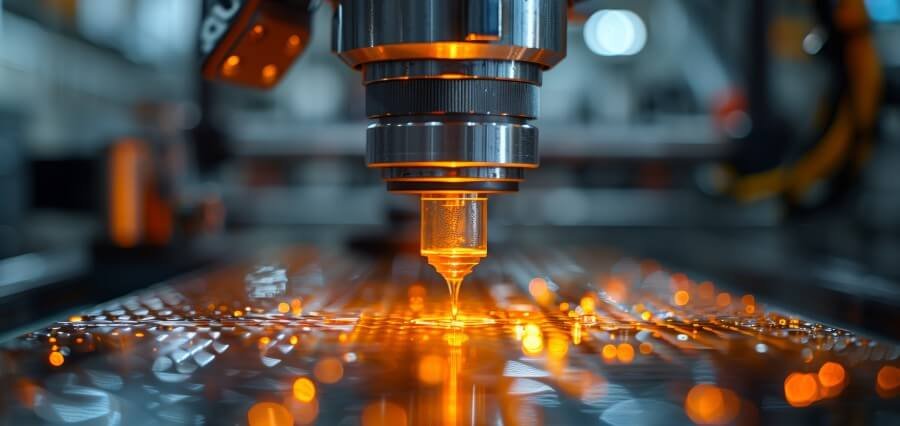Every component plays a critical role when it comes to getting the most out of your milling machine. Among these, bearings often don’t get the attention they deserve, yet they are key to your machine’s performance. In this post, we will dive into why bearings matter so much and how investing in top-tier bearings can make a world of difference in your operations.
Whether you’re dealing with high speeds or heavy loads, the right bearings can boost your machine’s lifespan, reduce downtime, and save you money in the long run. So, if you’re serious about optimizing your milling machine, stick around—we’ve got some valuable insights coming your way.
Let’s get started!
Role of Bearings in Milling Machines
Bearings are particularly crucial to a milling machine because they directly influence the machine’s precision and performance. If your bearings are worn out or of low quality, you might notice decreased accuracy in your cuts or a rougher finish on your products. Over time, this can lead to more significant issues, like increased wear on other parts of the machine or even unexpected breakdowns.
High-quality bearings, on the other hand, ensure that the spindle (the heart of the milling machine) rotates smoothly, maintaining the precision and quality of your work. They also help keep the machine running at its best for longer periods, which is essential for anyone who relies on consistent performance. Investing in good bearings is like investing in the overall health of your machine.
Types of Bearings Used in Milling Machines
When it comes to choosing bearings for your milling machine, there is no one-size-fits-all solution. Different types of bearings are designed to meet various operational needs, and selecting the right one can make all the difference in your machine’s performance.
Ball Bearings
They are the most commonly used in milling machines, especially for high-speed applications. They are designed to handle radial and axial loads, making them versatile. However, the true strength of ball bearings lies in their ability to significantly reduce friction, allowing the spindle to spin at high speeds with minimal resistance. To ensure optimal performance, it’s crucial to purchase ball bearings from a reputable seller who guarantees quality and reliability.
Roller Bearings
They come into play when you’re dealing with heavier loads. The roller bearings have a greater surface area in contact with the races, which allows them to handle more weight without compromising performance. They are ideal for applications where load-carrying capacity is a priority over speed.
Thrust Bearings
Milling machines are specialized for managing axial loads, which are forces parallel to the axis of rotation. They are crucial in maintaining the position of the rotating parts and ensuring that the machine operates with the necessary precision, especially during operations that involve heavy vertical or horizontal forces.
Choosing the right bearing depends on your specific needs—whether you prioritize speed, load capacity, or precision. Each type of bearing has its own strengths, and understanding these can help you optimize your milling machine’s performance to the fullest.
Maintenance Tips for Prolonging Bearing Life
Regular maintenance is key to truly getting the most out of your high-quality bearings. Here are some practical tips to help you keep your bearings—and, by extension, your milling machine—in top shape.
Regular Inspections
Just like any other crucial component, bearings should be inspected regularly. Look for signs of wear, such as unusual noises, vibrations, or increased heat during operation. Catching these early can prevent more significant issues down the line. A simple visual check during routine maintenance can go a long way in ensuring everything is functioning as it should.
Proper Lubrication
Bearings rely on lubrication to reduce friction and wear. Using the correct type and amount of lubricant is essential. Over-lubrication can be just as harmful as under-lubrication, leading to increased friction and heat. Make sure to follow the manufacturer’s guidelines on lubrication intervals and types of lubricants to use. Also, be mindful of the operating environment, as dust and debris can contaminate the lubricant, leading to premature bearing failure.
Timely Replacement
Even with the best care, bearings will eventually reach the end of their operational life. Knowing when to replace them is crucial to avoid unexpected downtime. Keep a record of your maintenance checks and replacements so you can predict when a bearing is nearing the end of its useful life. Proactive replacement ensures that your machine continues to operate smoothly without interruptions.
By following these maintenance tips, you can significantly extend the life of your bearings, ensuring that your milling machine continues to perform at its best. Remember, a little attention to maintenance can save you a lot of trouble—and expense—in the long run.
Wrapping Up
We hope you now understand why high-quality bearings make all the difference in your milling machine’s performance. So, invest in the best and maintain them properly. This will ensure smoother operations, longer machine life, and better results every time. It’s a small change that leads to big rewards in the long run.














